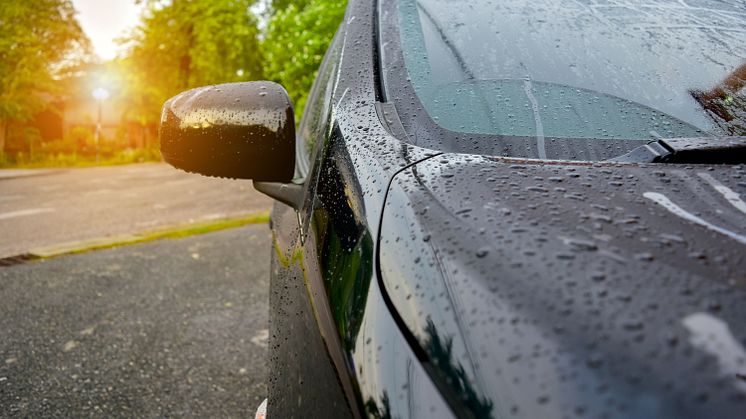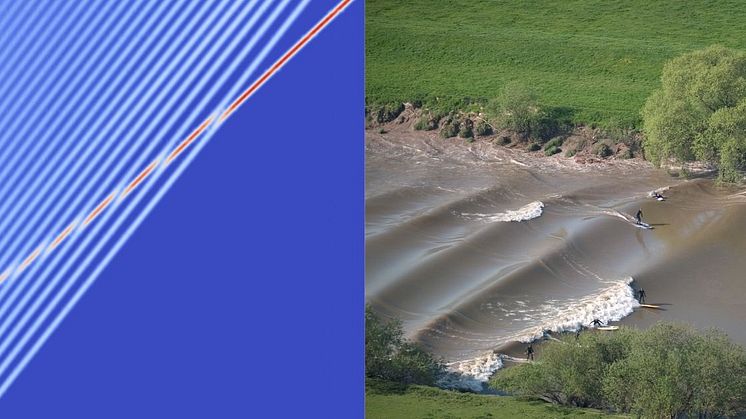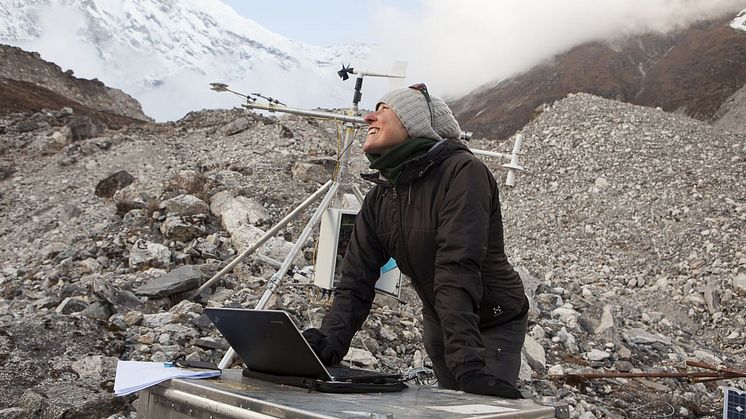Press release -
EXPERT COMMENT - No more water stains – we found a new way to control evaporation using maths
Rodrigo Ledesma-Aguilar, Associate Professor in the department of Mathematics, Physics and Electrical Engineering at Northumbria discusses a new way to control evaporation for The Conversation.
Water stains are the bane of every proud car owner or dinner party host, left behind by raindrops drying on a vehicle’s surface or rinse water on a wine glass. But we have discovered a new way of controlling the evaporation of liquid droplets that causes water marks using a technology inspired by nature. Our research could not only produce new treatments for minimising water stains on cars but also find other applications such as improving cooling devices used to prevent smartphones overheating.
The droplet evaporation process that forms water marks seems simple but involves a complex interplay between heat transfer, fluid flow and surface friction. Water evaporateswhen the molecules at its surface have enough energy to break free from the liquid and become water vapour. To gain this energy, the water absorbs heat from its surroundings, which is why sweat cools you down.
As a water droplet evaporates, any non-water particles in the liquid are drawn to its outer edge and are left behind as a ring of residue, a water mark. This happens because even seemingly smooth surfaces are actually quite rough on a microscopic scale. The bottom layer of a droplet’s edge will cling to the jagged surface while the molecules above it evaporate.
Water from the middle of the droplet then flows outward to replace the evaporated molecules, carrying with it solid particles and depositing them on the surface as the liquid finally dries up. This means the key to preventing water marks is creating surfaces that stop the edge of the droplet from clinging to the surface by controlling its shape and position during evaporation.
How snap evaporation works.
Snap evaporation - the way to control how water droplets evaporate on a solid surface from Northumbria University on Vimeo.
To tackle this issue, as with other projects in our lab, we drew inspiration from biological systems to create a material that mimicked useful properties found in nature. In this case, we used surfaces inspired by the pitcher plant, a carnivorous plant that grows in tropical rainforests.
The pitcher plant has a micro-structure on its surface that traps a thin layer of lubricating liquid, making it super slippery. As a result, insects that land on the plant’s surface slip and fall into a pitcher-shaped cavity, where they are digested by the plant.
In the lab, we created slippery surfaces that also trap a thin lubricant layer. On these surfaces, the evaporation of droplets becomes very uniform and the non-water particles gather in a speck rather than a ring-shaped water mark.
Next we looked for a way to control the location of the droplets as they evaporated, which can be used to minimise the visibility of these specks. To do this, we built a slippery surface shaped in a repeating wavy pattern of peaks and valleys. As the droplets evaporate and shrink, they snap into a new shape and location whenever their edge passes one of the peaks.
We were then able to work out how the shape and position of each droplet would change with each snap. This meant we could design a surface that would guide the droplets into the right place through a series of coordinated snaps.
To understand what causes the snaps, we looked into a branch of mathematics called bifurcation theory. This involves studying how a system responds when a parameter changes. In this case, we looked at how the droplet responds when its mass shrinks as the water evaporates.
Our idea is that, as the mass reduces, the droplet eventually reaches a certain point (a bifurcation) where it can no longer maintain its current shape or position and must change into another configuration. The wavy surface acts as a steering wheel, guiding the droplet through a sequence of stable configurations.
Our research could have an impact on many everyday applications, and we are currently working with industrial partners that can benefit from our research. For example, we are working with car manufacturers to develop ways to provide vehicle surfaces with a pattern that minimises water marks. We are also working with engineers that build heat-removal systems based on evaporation, such as those used to cool the microchips in smartphones, to improve their efficiency.
But for now you’ll still have to dry your wine glasses with a tea towel if you want to make a spotless impression.
This article was originally published by The Conversation. You can read the original article here.
Topics
Northumbria is a research-rich, business-focused, professional university with a global reputation for academic excellence. To find out more about our courses go to www.northumbria.ac.uk
If you have a media enquiry please contact our Media and Communications team at media.communications@northumbria.ac.uk or call 0191 227 4604.












